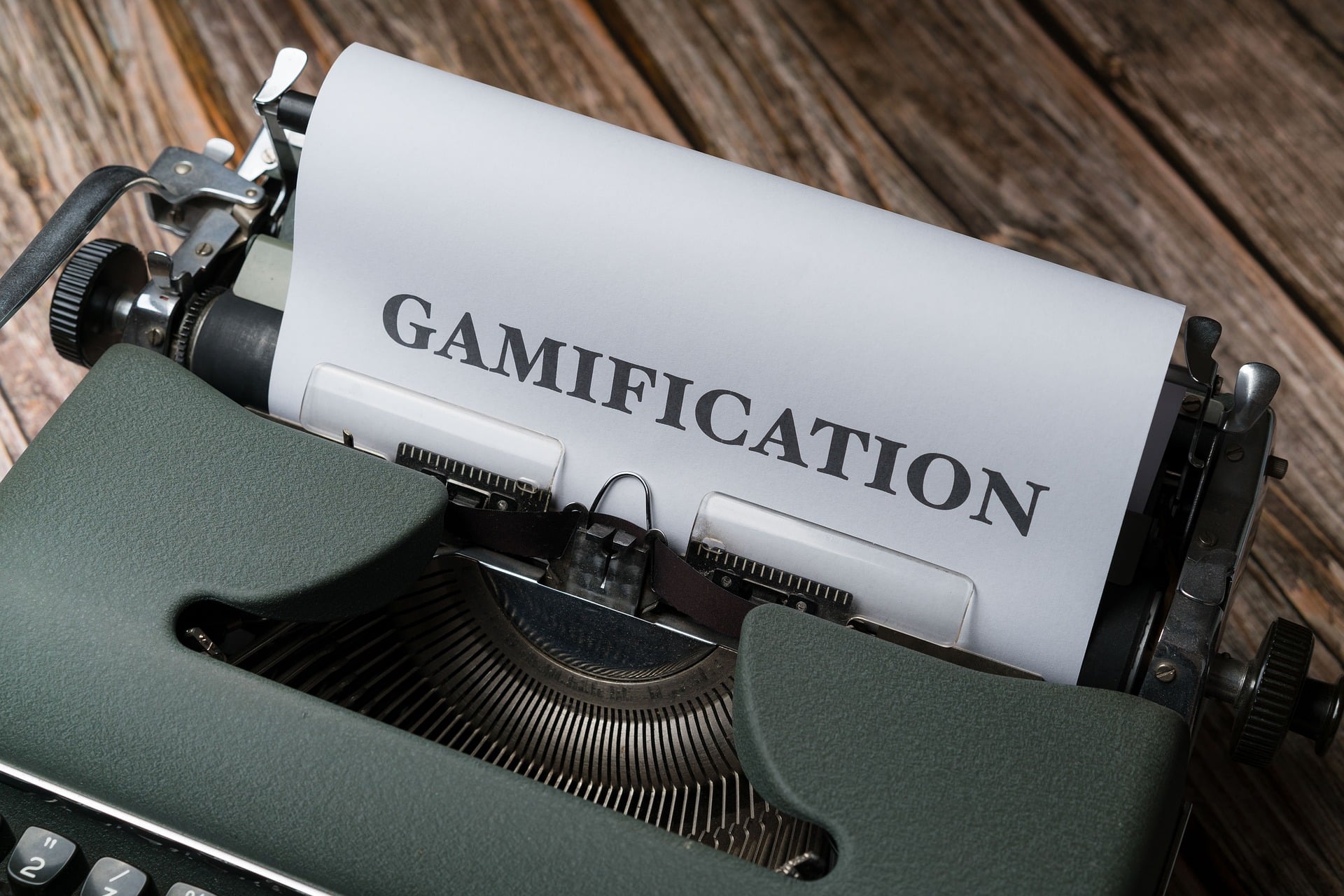The Principles of Gamification
Gamification is based on integrating game-like elements into a non-game context to make activities more entertaining and appeal to intrinsic motivators, thereby enhancing overall experience and outcomes. Some of the key principles of gamification include:
Reward Systems
Reward systems are central to gamification, motivating users through incentives such as points, badges, or gifts to perform specific actions. Examples include frequent flyer miles, loyalty cards like Payback, or the McDonald’s Monopoly game. Depending on the objectives, various types of rewards can be employed:
- Points: Foundational in any gamification project, allowing tracking and quantification of user actions.
- Levels: Transform continuous point accumulation into easily understandable stages.
- Badges: Visual acknowledgments for achieving specific goals.
- Leaderboards: Enable users to compare their progress with others.
Puzzles and Quizzes
Puzzles and quizzes are popular gamification elements that engage users in an enjoyable manner, promoting learning behaviors and imparting knowledge. Examples include memory games for vocabulary learning on platforms like Duolingo or quizzes in training portals.
Mini-Games and Challenges
Mini-games and challenges actively involve users, creating a flow effect where they concentrate fully on the game. For instance, Esteelauderanrcade.com offers mini-games related to skincare products. Companies also use application challenges where applicants must solve a quiz to qualify.
The principles of gamification enable companies to create marketing strategies that are playful and entertaining. By offering targeted incentives and challenges, users are motivated to engage repeatedly with the brand.
Goals of Gamification in Marketing
Gamification can be used in various areas of marketing to achieve specific goals. Here are some key applications:
Customer Acquisition
Gamified marketing campaigns attract potential new customers through their interactive and entertaining nature. Examples like Domino’s Pizza game “Pizza Hero” or Chipotle’s viral video “The Scarecrow” demonstrate how gamification can effectively increase brand awareness and acquire new customers. By presenting products and services in a memorable way through playful elements.
Customer Retention
In addition to customer acquisition, long-term retention of existing customers is a critical goal. Gamification motivates customers to engage repeatedly with a brand by creating incentives such as points, badges, or leaderboards. Customer loyalty programs benefit greatly from gamified elements that offer competitive and entertainment value. Loyal customers feel more strongly connected to the brand.
Employee Motivation
Gamification can also be beneficially used within a company to enhance employee motivation and engagement. Game mechanics can be integrated into training, workflow processes, or idea management. Points, awards, and challenges create a more positive work environment that motivates employees to perform at their best. Gamified project management tools make progress transparent and reward milestones.
Gamification is a versatile tool for effectively achieving marketing and business goals. Through targeted incentives and entertaining elements, it helps acquire new customers, retain existing ones, and motivate the workforce.
Branding and advertising
Examples of Applications
Gamification is applied in many areas to help companies achieve their goals more effectively. Here are some concrete examples:
Customer Acquisition on Websites
As a marketing tool, especially in the form of mobile apps, gamification supports customer acquisition. Interactive games motivate visitors to leave leads and engage their attention through an excellent user experience. This positively impacts the conversion rate. Examples include Domino’s Pizza game “Pizza Hero” or Chipotle’s viral video “The Scarecrow,” which presents products in a memorable way.
Reward Systems in Apps
Reward systems in apps are well-received by existing customers. The playful approach to companies, products, and services not only boosts sales but also strengthens customer loyalty. Frequent flyer miles, Payback cards, or the McDonald’s Monopoly game are well-known examples of gamified bonus programs.
Training and Education in Companies
Gamification can be effectively used within the company to motivate employees. Game mechanics in training, workflows, or idea management can be integrated. They create a positive work environment that motivates employees to perform at their best. Gamified project management tools make progress transparent and reward milestones.
Organizations can particularly benefit from the gamification approach in training programs. Routine but crucial training on safety, compliance, or legal matters can be made entertaining. Employees learn the content much easier when the information is presented in an engaging manner.
Tips for Implementing a Gamification Strategy
Define Clear Objectives
Successfully integrating gamification into marketing strategies requires thoughtful planning and a deep understanding of the target audience. A key aspect is creating immediate value for the user, whether through entertainment, information, or rewards. It is crucial that game mechanics are closely linked to brand goals and create a seamless brand experience. To ensure success, it is essential to define clear objectives and design game elements accordingly.
Tailor Game Mechanics to the Audience
Gamification is not a one-size-fits-all approach. Game mechanics must be carefully tailored to the target audience and their preferences. While some users are motivated by competitions and leaderboards, others prefer cooperative elements or rewards. Analyze the needs and behaviors of your audience to select the right gamification elements and create a captivating experience.
Continuous Feedback and Adjustments
Using advanced analytics tools is essential for gaining detailed insights into user behavior and calculating the ROI of gamification measures. Indicators such as engagement rates, conversion rates, or the frequency of interaction with gamification elements provide valuable information about the success of the strategy. Moreover, collecting feedback directly from users allows continuous improvement of the gamification experience and adaptation to changing needs and preferences of the target audience.
Conclusion
Gamification has proven to be a powerful tool for increasing customer engagement and brand loyalty. By integrating entertaining game elements into marketing strategies, companies can enhance audience engagement, acquire new customers, and retain existing customers in the long term. Additionally, gamification can be used internally to boost employee motivation and involvement, ultimately enhancing business success.
Effective implementation of a gamification strategy requires careful planning, clear objectives, and a deep understanding of the target audience. Only when game mechanics are seamlessly integrated into the brand experience and provide immediate value to users can gamification achieve its full potential. Continuous feedback and adjustments allow for continuous optimization of the gamification experience and adaptation to the changing needs of the target audience.








